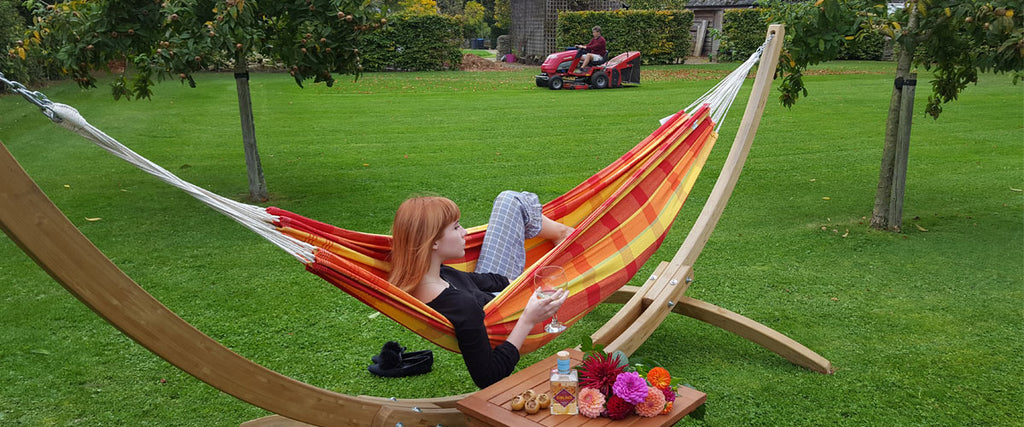Yes, really. It’s entirely possible to continue your hammock sessions through Autumn- just add blankets. It’s not particularly glamourous by any means; today I look like I’ve encased myself in a fabric cocoon.

But it’s super cosy, and will keep you snug against any pesky winds.

I’m pleased as punch that I can continue my hammock sessions through the new season. Things have been more hectic than ever at the moment, so it’s nice to kick back and relax for a while. I’ve also got a cracking view of the tennis courts, but more on that another time.

Hammock Barn/gardener extraordinaire John has been showing me round the grounds this afternoon, and educated me in all things horticultural. Turns out my hammock is situated between a collection of Medlar fruit trees (nope, I’ve never heard of them either) which is referred to as an ‘open arse’ fruit *. Apparently. It also actually works rather well as a garnish for gin, so it’s safe to say I’m sold.

But enough with the meddling about (see what I did there). No tonic, no faff. Today, all I want is a hammock, a blanket, and some straight gin- the beautifully fitting Sibling Autumn Edition, with apple, blackberries and a kick of cardamom. It’s a treat that’s hard to beat.

The great British weather will inevitably interrupt my precious hammock time sooner rather than later, but for now I’m content to soldier on regardless. Who said hammocks just have to be for summer?

* The Medlar was an important source of winter vitamin C in medieval times. The French call it cul de chien translated as dog's arse and Shakespeare called the fruits 'open arse'. The fruits are rock hard and impossible to eat until they have 'bletted', that is the fruits have softened and turned brown in autumn. If left on the tree after the frost the fruit softens and appears rotten and can be sucked out through the skin and to my palate tastes of a mix between apple and fig. Maybe this is why DH Lawrence called medlars 'autumn excrementa'. - John




